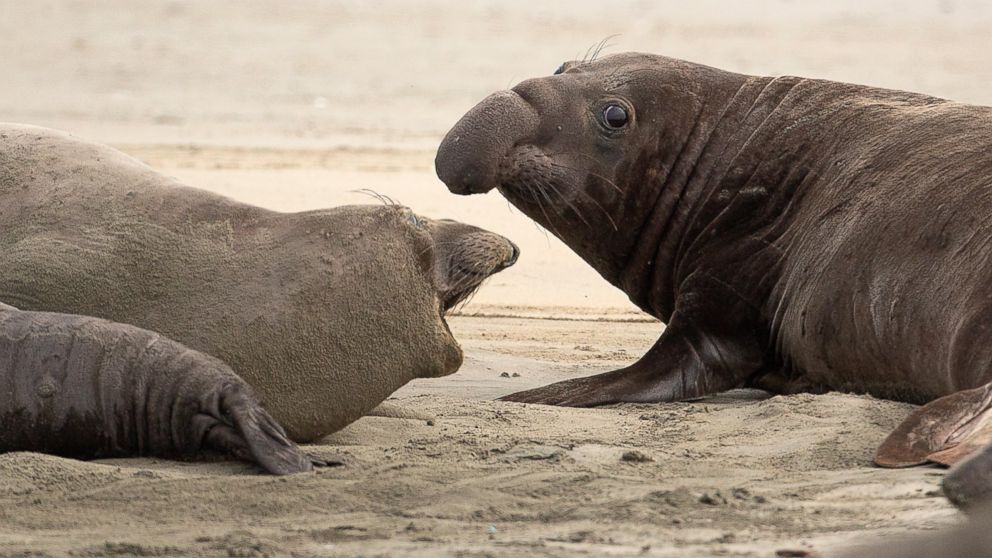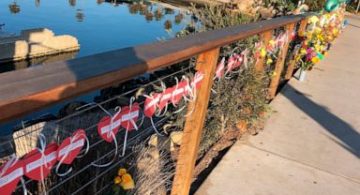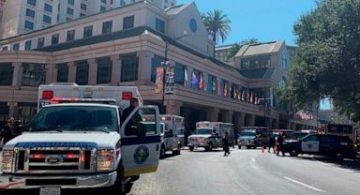
National parks across the United States are scrambling to clean up and repair damage that visitors and storms caused during the recent government shutdown while bracing for the possibility of another closure ahead of the busy Presidents Day weekend later this month.
Visitors left human waste, piles of trash, graffiti, used unauthorized trails and damaged Joshua trees at the namesake park in California during the 35-day shutdown. Many of the parks went unstaffed, while others had skeleton crews with local governments and nonprofits contributing money and volunteers.
National Park Service spokesman Mike Litterst in Washington, D.C., declined to provide a full accounting of the damage at more than 400 locations, saying it was isolated and most visitors took good care of the land.
But conservationists warn that damage to sensitive lands could take decades to recover. Even before the shutdown, national parks faced an estimated $12 billion maintenance backlog that has now grown.
President Donald Trump has said another shutdown could start Feb. 15 if he and Democratic leaders can’t agree on funding for a U.S.-Mexico border wall, compounding the pressure the park service faces to catch up on repairs and maintenance.
Hiring seasonal workers who typically start in the spring as rangers, fee collectors and hiking guides also has been delayed.
“We’re kind of ready to just have a bit more stability,” said Angie Richman, a spokeswoman at Arches National Park in Utah.
Arches visitors left human waste outside a restroom, stomped out five trails in a permit-only area that was supposed to be closed and damaged an entrance gate to allow vehicles to drive on snow-covered roads when the park was closed after a storm, Richman said.
At Joshua Tree National Park in Southern California, one of the iconic twisted-limbed Joshua trees was run over by an off-road vehicle and a juniper tree was cut down, said park superintendent David Smith. Several other Joshua Trees were damaged, including one that was spray painted, but the park has yet to determine the exact number, he said. Off-road vehicles created extensive unauthorized trails in the park’s deserts, with wheel marks dug into the delicate soil nearly a foot deep in some spots, Smith said.
Employees at Death Valley National Park found human waste and toilet paper scattered in the desert and evidence people tried to kick in locked restroom doors, said David Blacker, executive director of the Death Valley Natural History Association. The group kept the visitors center open during most of the shutdown, where tourists got information on packing out trash and digging a hole to use the bathroom.
A time-lapse video on Death Valley’s Facebook page showed how it took staffers two hours to clean a restroom overflowing with trash and splashed with waste. Crews also have to rake and replant vegetation to repair ruts from off-road vehicles, which delays work elsewhere in the 3.4 million-acre park.
“It became pretty depressing the kinds of things people will do when they are unsupervised,” Blacker said.
People in Colorado’s Rocky Mountain National Park drove around locked gates and through meadows, spokeswoman Kyle Patterson said.
At Great Smoky Mountains National Park straddling the North Carolina-Tennessee line, visitors cut locks on some gates to closed roads and stole about $5,000 in maintenance tools, spokeswoman Dana Soehn said.
Winter storms damaged some parks that lacked enough staff to make repairs quickly.
Officials at Zion National Park in Utah, Mesa Verde National Park in southwestern Colorado and Olympic National Park in Washington were fixing trails, roads and campgrounds. Mesa Verde wasn’t set to open until Monday, and some areas were still closed at Zion and Olympic.
Campgrounds, visitors centers and trails that seasonal workers help prepare could face delayed openings, and families planning spring break or summer vacations might think twice about visiting national parks if they don’t think they’re safe or fully staffed, said Phil Francis, chairman of the Coalition to Protect America’s National Parks.
“There are a lot of impacts that will be felt in the future that aren’t being felt or even talked about now,” he said.
In some parks, animals that typically don’t interact with visitors claimed the space.
A colony of elephant seals took over a Northern California beach in Point Reyes National Seashore without staffers to discourage the animals from congregating in the popular tourist area. Rangers and volunteer docents will lead small groups of visitors starting this weekend to the edge of a parking lot so they can safely see the elephant seals and their newborn pups.
Meanwhile, the prospect of another shutdown looms.
Grand Canyon National Park could miss out on its main centennial celebration Feb. 26 and other related events.
“It’s a big deal, and we are looking forward to celebrating it in whatever way we can,” park spokeswoman Emily Davis said.
Elizabeth Jackson, a spokeswoman for Guadalupe Mountains National Park on the Texas-New Mexico border, noted the stress it places on workers.
“It’s a way of life if you’re a federal employee,” Jackson said. “Not to be glib, but it’s something we face every year.”
————
Fonseca reported from Flagstaff, Arizona. Associated Press writers Ellen Knickmeyer in Washington, D.C.; David Warren in Dallas; Matt Volz in Helena, Montana; and Dan Elliott in Denver and contributed to this story.





